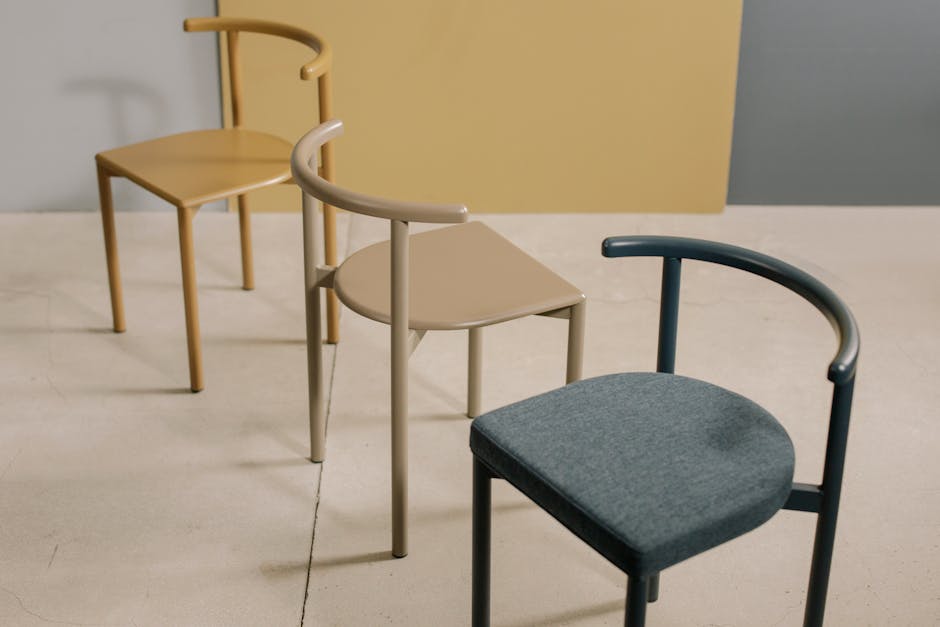The Art of Office Seating: Designing Productive Workspaces
“Explore the impact of office seating arrangements on productivity and employee satisfaction. Learn about different types of layouts, key factors to consider, and best practices for implementing an effective seating plan that fosters collaboration while respecting individual needs. ”

The Power of Thoughtful Office Seating Arrangements
In today's dynamic work environment, the way we arrange our office spaces can significantly impact employee productivity, satisfaction, and overall company culture. A well-designed office seating arrangement is more than just placing desks and chairs; it's about creating an ecosystem that fosters collaboration, creativity, and efficiency.

Why Office Seating Matters
The layout of your office can influence everything from communication patterns to job satisfaction. A thoughtfully planned seating arrangement can:
- Enhance collaboration and teamwork
- Improve productivity and focus
- Boost employee morale and job satisfaction
- Facilitate better communication across departments
- Reflect and reinforce company culture
Types of Office Seating Arrangements
There are several popular office seating arrangements, each with its own set of advantages and potential drawbacks. Let's explore some of the most common types:
Open Plan
The open plan office has gained popularity in recent years for its ability to foster collaboration and communication. This layout typically features large, open spaces with minimal physical barriers between workstations.
Pros:
- Encourages spontaneous interactions and idea-sharing
- Maximizes space efficiency
- Promotes a flatter organizational structure
Cons:
- Can be noisy and distracting for some employees
- May lack privacy for sensitive conversations or focused work
Cubicles
Cubicles offer a middle ground between open plan and private offices, providing semi-private workspaces for employees.
Pros:
- Offers some privacy and personal space
- Can be customized to suit individual needs
- Helps reduce noise and visual distractions
Cons:
- May feel isolating or claustrophobic for some
- Can hinder collaboration if not designed thoughtfully
Team Clusters
This arrangement groups employees into pods or clusters based on their teams or projects.
Pros:
- Facilitates teamwork and communication within groups
- Allows for easy collaboration on shared projects
- Can be easily reconfigured as team compositions change
Cons:
- May create silos between different teams
- Can be challenging to implement in smaller office spaces

Flexible Seating
Also known as hot-desking or activity-based working, flexible seating allows employees to choose their workspaces based on their tasks or preferences.
Pros:
- Offers variety and freedom of choice to employees
- Maximizes space utilization
- Encourages movement and interaction throughout the day
Cons:
- May cause anxiety for those who prefer routine
- Requires robust workplace software integration to manage effectively
Factors to Consider When Choosing an Office Seating Arrangement
When designing your office layout, consider the following factors to ensure you create an environment that works for everyone:
-
Company Culture: Your seating arrangement should reflect and reinforce your organization's values and work style.
-
Nature of Work: Consider the types of tasks your employees perform daily. Do they require quiet focus or frequent collaboration?
-
Team Dynamics: Think about how different teams interact and which groups need to be in close proximity.
-
Employee Preferences: Conduct surveys or interviews to understand what your employees value in their workspace.
-
Flexibility: Design for adaptability to accommodate future growth and changing needs.
-
Technology Requirements: Ensure your layout supports necessary technology and equipment.
-
Ergonomics: Prioritize employee comfort and health with ergonomic furniture and proper spacing.
Implementing Your Office Seating Arrangement
Once you've decided on the best seating arrangement for your office, follow these steps for successful implementation:
1. Communicate Clearly
Inform employees about the upcoming changes, explaining the reasoning behind the new layout and its expected benefits. Unlocking employee engagement starts with transparent communication.
2. Gather Feedback
Encourage employees to share their thoughts and concerns about the new arrangement. This can help you address potential issues before they arise.
3. Phase the Transition
If possible, implement changes gradually to allow employees time to adjust and provide feedback along the way.
4. Provide Necessary Support
Offer training on new technologies or systems that may be part of the new arrangement, such as desk booking software for flexible seating.
5. Monitor and Adjust
Regularly assess the effectiveness of your new layout and be prepared to make adjustments based on employee feedback and observed behaviors.

Best Practices for Maintaining an Effective Office Seating Arrangement
To ensure your office seating arrangement continues to serve your organization well over time, consider these best practices:
-
Regular Evaluations: Conduct periodic assessments of your office layout to ensure it still meets your team's needs.
-
Flexibility: Incorporate elements that allow for easy reconfiguration as needs change.
-
Balance: Strive for a balance between collaborative spaces and areas for focused work.
-
Inclusivity: Ensure your seating arrangement accommodates employees with diverse needs and work styles.
-
Office Etiquette: Establish clear guidelines for shared spaces and noise levels to maintain a respectful work environment.
Conclusion
Creating the perfect office seating arrangement is an ongoing process that requires thoughtful planning, employee input, and a willingness to adapt. By considering the unique needs of your workforce and staying flexible, you can design a workspace that not only boosts productivity but also enhances employee satisfaction and overall company culture.
Remember, there's no one-size-fits-all solution when it comes to office layouts. The key is to find what works best for your team and be open to evolving your space as your organization grows and changes. With the right approach, your office seating arrangement can become a powerful tool for driving collaboration, creativity, and success.